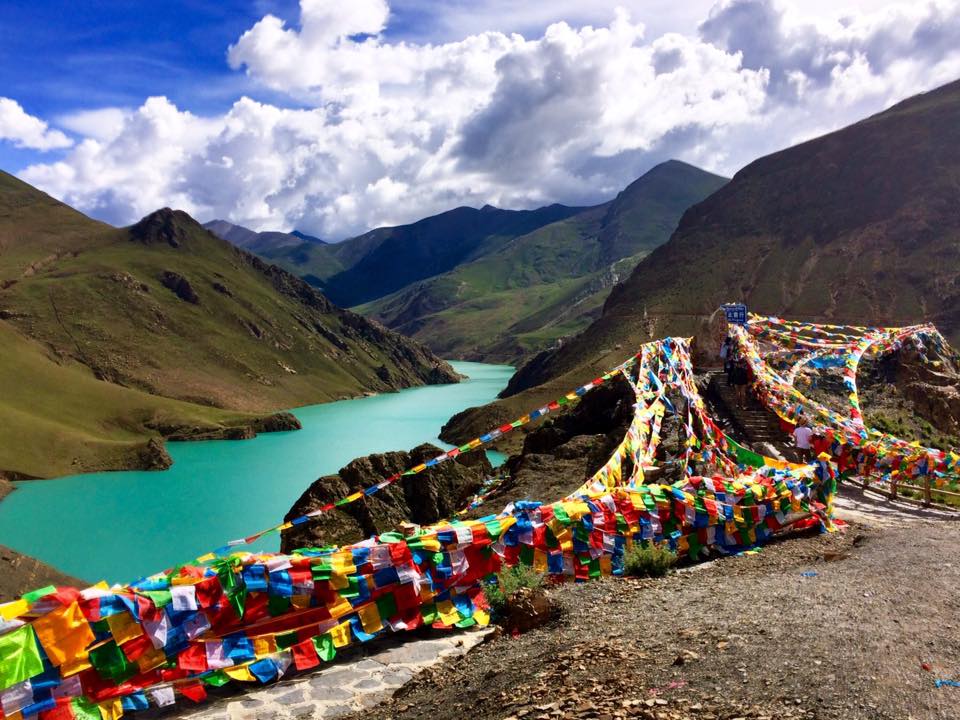
Imagine wandering through empty streets in empty towns, bordered by a vast plateau and a horizon of white peaks that jut into the sky.
As you walk, your only company is a few simple concrete buildings, the sound of a faint megaphone – “as part of the 35 year plan, the GDP has gown by 2.5 percent ..” – and a grand archway boasting: “The number 1 living destination”.
You’re in Tibet, where I was last month.
A vision that isn’t mine.
“The wise pursue understanding; fools follow the reports of others.” – Tibetan Proverb
The Chinese government has invested huge amounts of money in infrastructure in Tibet, and continues to incentivise Chinese people to relocate to the region. By all accounts, the money and people are pouring in.
Because of this, the vast Tibetan plateau is now dotted with miniature concrete towns. These isolated clusters usually feature about three mid-rise, communist-style concrete residential buildings (empty), a number of store fronts (empty) and a few streets splashed with Chinese flags.
As you explore the empty streets, there is a strange juxtaposition between the lack of people and activity, and the signs over the towns’ entrance archway boasting statements like: “China’s best town of the future” and, “China’s number 1 living destination”.
From a communications perspective, these grandiose statements have some logic; people need something to believe in, to see the possibilities, to grasp the vision.
But in this case, the vision is, firstly, a painful stretch from the reality and secondly, that of the government, not the Tibetan or Chinese people. And in this particular part of the world, the nature of the power structures also means that this vision isn’t open for input or debate. There is no co-creation, engagement or even consultation. The people’s new world is being handed to them done and dusted – soulless and empty.
An ancient practice, with people at the centre.
In stark contrast, step away from the empty towns of the plateau and into the whitewashed confines of Sera Monastery, one of the most important monasteries in Tibet.
A number of times each year, the 400 residing Buddhist monks collect in a sun-dappled courtyard to debate the fundamentals of the philosophy and practice of Buddhism. I was lucky enough to be there for one of these times.
It’s an animated affair. The monks laugh, clap, and yell, testing and contesting each other’s beliefs and interpretations of ancient teachings, all with smiles on their faces and a shared purpose: to progress the practice of Buddhism for the good of all.
It struck me that this community, centered on a religion that has been around since around the middle of the first millennium BCE, is still actively changing and adapting. It is doing so because its structure and practice allow it to, at the hands of the people.
It begs the question: would this seemingly ancient practice still be so alive and well, if it didn’t allow itself to be owned and changed by the people?
Building a shared vision.
What these two examples have in common is progression and people. Both institutions want to move forward, grow, and modernise, and both want (and need) people to back them. Without the support of the people, they are just an ideological shout into the void.
What they differ in is approach. While one empowers and trusts people, and encourages the creation of a shared vision, the other herds people towards a pre-constructed reality.
It goes without saying that the context surrounding these examples is complex (politically, culturally, economically, historically) but, at it’s core, it’s about how much importance is placed on engaging the people affected by the future, as co-creators of that future.
Back in Australia, our country and community is philosophically committed to creating places and structures that support strong, inclusive, healthy communities, and serve the people within them both now and into the future. Our democratic heart and bones place people right at the centre of decision making.
That said, look outside your own window: what examples can you see of places and projects that have forged ahead with their vision only to find that, on completion, no one was standing beside them? There are certainly a few outside our window in Melbourne. Aside from panic, the result is often the loss of funds, time, support, and confidence.
At Ellis Jones, much of our work is focused on avoiding this situation, and instead on strengthening and future-proofing the industries and organisations we work in. As communicators at heart, we always start with people, and work with our clients to do the same.
By giving customers, members and beneficiaries the tools and ability to understand the dynamics that affect an organisation, industry or region, asking them the questions that matter, being upfront and clear with them, and building a relationship with them based on trust and mutual goals, you harness the proven strengths of democracy to build a platform that will weather the winds of change. You build invested, loyal advocates. You build a shared vision.
A lesson in progress.
Behind the striking landscapes, fluttering prayer flags and ancient monasteries, Tibet is a region pulled between two worlds: that of the Tibetan culture and religion, and that of modern China. There is a lot of sadness in this convergence; in the people, language, culture and traditions that are simply losing the fight, and disappearing. This is neither the time nor place to express this sadness.
Both of these worlds continue to move forward, in parallel, progressing in vastly different fashions. The difference in these approaches, and the implications on the type of society they foster and build, reveals an important lesson for our society as we too lurch forwards.


